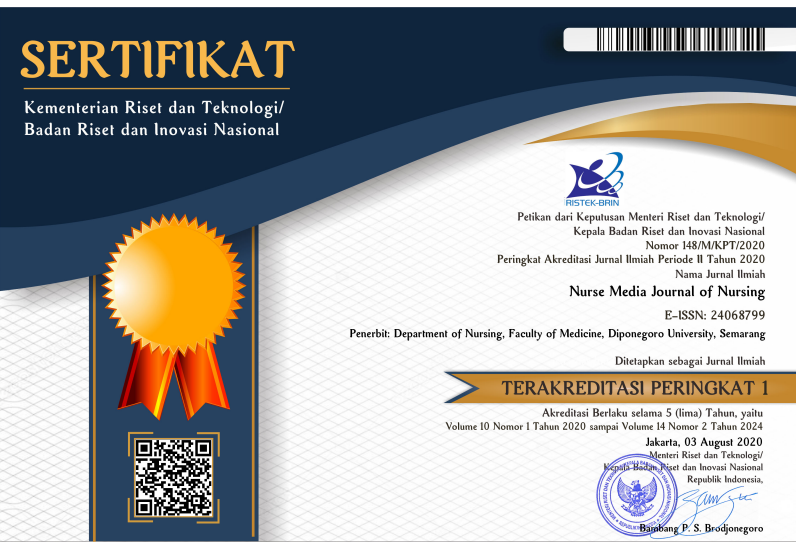Predictors of Stroke Survivors’ Quality of Life During Home Rehabilitation: A Cross-Sectional Study
Keywords:
Home rehabilitation, stroke survivors, quality of lifeAbstract
Background: Stroke survivors face the challenge of living in a body that functions differently than before, which impacts their quality of life. Stroke rehabilitation is essential, as the principle of neuroplasticity supports recovery from disability, and this process continues when survivors undergo home-based rehabilitation. However, the factors influencing their quality of life remain unclear.
Purpose: This study aimed to investigate the predictors of stroke survivors’ quality of life during home rehabilitation.
Methods: A cross-sectional study was conducted among 142 stroke survivors recruited using purposive sampling. Data were collected using the Stroke Survivor Quality of Life (SS-QOL) questionnaire and an additional questionnaire assessing knowledge, attitudes, and practices related to home rehabilitation. Logistic regression was employed to examine predictors of stroke survivors’ quality of life.
Results: Most respondents (59.15%) were men, with a mean age of 59.25 years (SD = 10.5). Many stroke survivors had a high quality of life (n = 92; 64.79%), good knowledge (n = 114; 80.28%), positive attitudes (n = 83; 58.5%), and a high level of home rehabilitation practice (n = 89; 62.68%). Significant correlations were found between knowledge (p < 0.001), attitude (p = 0.040), and practice (p = 0.001) with stroke survivors’ quality of life.
Conclusion: This study indicates significant correlations between knowledge, attitudes, and practices related to home rehabilitation and stroke survivors’ quality of life. These findings provide valuable insights for nurses, emphasizing the importance of structured health education on home-based rehabilitation to enhance stroke survivors’ quality of life.
Downloads
References
Acerra, N., Bastasi, D., Carter, S. L., Fung, J., Halabi, M.-L., Harris, J., Kim, E., Noland, A., Pooyania, S., Rochette, A., & Stack, B. D. (2019). Canadian Stroke Best Practice Recommendations Part One: Rehabilitation, Recovery and Community Participation following Stroke. Health and Stroke Foundation, December
Adigwe, G. A., Alloh, F., Smith, P., Tribe, R., & Regmi, P. (2024). Assessment of Health-Related Quality of Life of Stroke Survivors in Southeast Communities in Nigeria. International Journal of Environmental Research and Public Health, 21(9). https://doi.org/10.3390/ijerph21091116
Adigwe, G. A., Tribe, R., Alloh, F., & Smith, P. (2022). The Impact of Stroke on the Quality of Life (QOL) of Stroke Survivors in the Southeast (SE) Communities of Nigeria: A Qualitative Study. Disabilities, 2(3), 501–515. https://doi.org/10.3390/disabilities2030036
Alotaibi, S. M., Alotaibi, H. M., Alolyani, A. M., Abu Dali, F. A., Alshammari, A. K., Alhwiesh, A. A., Gari, D. M., Khuda, I. K. M. Q., & Vallabadoss, C. A. (2021). Assessment of the stroke-specific quality-of-life scale in kfhu, khobar a prospective cross-sectional study. Neurosciences, 26(2), 171–178. https://doi.org/10.17712/nsj.2021.2.20200126
Bártlová S, Šedová L, Havierniková L, Hudáčková A, Dolák F, & Sadílek P. (2022). QUALITY OF LIFE OF POST-STROKE PATIENTS. 61(2), 101–108. https://doi.org/10.2478/sjph-2022-0014.QUALITY
Carey, L., Walsh, A., Adikari, A., Goodin, P., Alahakoon, D., De Silva, D., Ong, K. L., Nilsson, M., & Boyd, L. (2019). Finding the Intersection of Neuroplasticity, Stroke Recovery, and Learning: Scope and Contributions to Stroke Rehabilitation. Neural Plasticity, 2019. https://doi.org/10.1155/2019/5232374
Chau, J. P. C., Lo, S. H. S., Butt, L., & Liang, S. (2022). Post-Stroke Experiences and Rehabilitation Needs of Community-Dwelling Chinese Stroke Survivors: A Qualitative Study. International Journal of Environmental Research and Public Health, 19(23). https://doi.org/10.3390/ijerph192316345
Cheong, M. J., Kang, Y., & Kang, H. W. (2021). Psychosocial factors related to stroke patients’ rehabilitation motivation: A scoping review and meta-analysis focused on south korea. Healthcare (Switzerland), 9(9). https://doi.org/10.3390/healthcare9091211
Choi, H., Lim, A., & Song, Y. (2022). Adaptive Behavior in Stroke Survivors: A Concept Analysis. Asian Nursing Research, 16(4), 231–240. https://doi.org/10.1016/j.anr.2022.07.002
Cook, C. V., & Pompon, R. H. (2023). Lessons on Health Literacy and Communication in Post-Stroke Rehabilitation. Delaware Journal of Public Health, 9(3). https://doi.org/10.32481/DJPH.2023.08.010
Cumming, T. B., Churilov, L., Collier, J., Donnan, G., Ellery, F., Dewey, H., Langhorne, P., Lindley, R. I., Moodie, M., Thrift, A. G., & Bernhardt, J. (2019). Early mobilization and quality of life after stroke: Findings from AVERT. Neurology, 93(7), E717–E728. https://doi.org/10.1212/WNL.0000000000007937
Donkor, E. S. (2018). Stroke in the 21st Century: A Snapshot of the Burden, Epidemiology, and Quality of Life. Stroke Research and Treatment, 2018. https://doi.org/10.1155/2018/3238165
Ellepola, S., Nadeesha, N., Jayawickrama, I., Wijesundara, A., Karunathilaka, N., & Jayasekara, P. (2022). Quality of life and physical activities of daily living among stroke survivors; cross-sectional study. Nursing Open, 9(3), 1635–1642. https://doi.org/10.1002/nop2.1188
Erika Klockar, Maya Kylen, Catharina Gustavsson, Tracy Finch, Fiona Jones, M. E. (2023). Self-Management from the perspective of people with stroke - An interview study. Patient Education and Counseling, Elsevier
Fong, T. C. T., Lo, T. L. T., & Ho, R. T. H. (2023). Psychometric properties of the 12-item Stroke-Specific Quality of Life Scale among stroke survivors in Hong Kong. Scientific Reports, 13(1), 1–10. https://doi.org/10.1038/s41598-023-28636-7
Garrett-jones, E. C., Anakor, E. A., Mamin, F. A., Ummul, K., & Das, S. K. (2019). The long-term challenges faced by stroke survivors and their caregivers following a stroke in Bangladesh : a qualitative study. 3, 1–10. https://doi.org/10.29392/joghr.3.e2019053
Gillen, G. (2016). Stroke Rehabilitation A Function-Based Approach (Fourth Edi). Elsevier. https://media.oiipdf.com/pdf/43660146-c1c6-4a24-9cb9-8dc650d7e5b3.pdf
Handayani, F., Setyowati, S., Pudjonarko, D., & Sawitri, D. R. (2021). The effect of “self-help packages” on post stroke depression among ischemic stroke survivors. Nurse Media Journal of Nursing, 10(3), 361–375. https://doi.org/10.14710/NMJN.V10I3.31014
Handayani, F., Utami, R. S., Ropyanto, C. B., Kusumaningrum, N. S. D., & Hastuti, Y. D. (2022). The Associated Factors of Quality of Life among Stroke Survivors: A Study in Indonesia. Nurse Media Journal of Nursing, 12(3), 404–413. https://doi.org/10.14710/nmjn.v12i3.45763
Kemenkes RI. (2019). Hasil Riset Kesehatan Dasar Tahun 2018. Kementrian Kesehatan RI, 53(9), 1689–1699
Kementerian Kesehatan, R. I. (2022). Profil Kesehatan Indonesia. Kementerian Kesehatan Republik Indonesia, Jakarta
Kementerian Kesehatan, R. I. (2023). Survei Kesehatan Indonesia (SKI) Tahun 2023. SKI, 1–68
Kennedy, N. C. (2021). The role of neuroplasticity in stroke nursing. British Journal of Neuroscience Nursing, 17(Sup2), S20–S25. https://doi.org/10.12968/bjnn.2021.17.sup2.s20
Khalid, W., Rozi, S., Ali, T. S., Azam, I., Mullen, M. T., Illyas, S., un-Nisa, Q., Soomro, N., & Kamal, A. K. (2016). Quality of life after stroke in Pakistan. BMC Neurology, 16(1), 1–12. https://doi.org/10.1186/s12883-016-0774-1
Kosasih, C. E., Punthmatharith, B., & Boonyasopun, U. (2020). Family support for patients with stroke: A systematic review. Journal of Advanced Pharmacy Education and Research, 10(3), 47–56
Kusuma, D. K. (2011). Metodologi Penelitian Keperawatan. Trans Info Media
Li, X., He, Y., Wang, D., & Rezaei, M. J. (2024). Stroke rehabilitation: from diagnosis to therapy. Frontiers in Neurology, 15(August), 1–21. https://doi.org/10.3389/fneur.2024.1402729
Lumbantobing, V. B. M., Priastomo, M., Kosasih, C. E., Rhamelani, P., Anggadiredja, K., & Adnyana, I. K. (2025). Analysis of Factors Affecting Quality of Life (QoL) in Middle-Aged Stroke Patients (Under 65 Years Old) in the Rehabilitation Phase: Multivariate Regression Analysis. Journal of Multidisciplinary Healthcare, 18(June), 3477–3491. https://doi.org/10.2147/JMDH.S504851
Mameletzi, D., Anifanti, M., Baotić, K., Bernetti, A., Budinčević, H., Žuna, P. Č., Deligiannis, A., Dennehy, Z., Ferrari, A., Forgione, D., Hrvoje, J., Ilardi, M., Kiss-Szemán, B. S., Koutlianos, N., Kovářová, I., Mangone, M., Paoloni, M., Rapolienė, L., Razbadauskas, A., … Kouidi, E. (2021). Identification of Good Practices in Long-Term Exercise-Based Rehabilitation Programs in Stroke Patients. BioMed Research International, 2021. https://doi.org/10.1155/2021/9202716
Marín-Medina, D. S., Arenas-Vargas, P. A., Arias-Botero, J. C., Gómez-Vásquez, M., Jaramillo-López, M. F., & Gaspar-Toro, J. M. (2024). New approaches to recovery after stroke. Neurological Sciences, 45(1), 55–63. https://doi.org/10.1007/s10072-023-07012-3
Martini, S., Setia Ningrum, D. A., Abdul-Mumin, K. H., & Yi-Li, C. (2022). Assessing quality of life and associated factors in post-stroke patients using the world health organization abbreviated generic quality of life questionnaire (WHOQOL-BREF). Clinical Epidemiology and Global Health, 13(December 2021), 100941. https://doi.org/10.1016/j.cegh.2021.100941
Muhith, A., & Magfirah Supu, N. (2024). The Impact of Self-Management Program on Quality of Life and Neurological Function in Stroke Patients: A Systematic Review. Journal of Applied Nursing and Health, 6(2), 312–323. https://doi.org/10.55018/janh.v6i2.263
Oliveira-Kumakura, A. R. de S., Batista, L. M. O. S., Spagnol, G. S., & Valler, L. (2023). Functionality and quality of life in Brazilian patients 6 months post-stroke. Frontiers in Neurology, 14(2). https://doi.org/10.3389/fneur.2023.1020587
Platz, T. (2021). Clinical pathways in stroke rehabilitation: Evidence-based clinical practice recommendations. Clinical Pathways in Stroke Rehabilitation: Evidence-Based Clinical Practice Recommendations, 1–282. https://doi.org/10.1007/978-3-030-58505-1
Poomalai, G., Prabhakar, S., & Sirala Jagadesh, N. (2023). Functional Ability and Health Problems of Stroke Survivors: An Explorative Study. Cureus, 15(1), 1–6. https://doi.org/10.7759/cureus.33375
Post, M. W. M., Boosman, H., Van Zandvoort, M. M., Passier, P. E. C. A., Rinkel, G. J. E., & Visser-Meily, J. M. A. (2011). Development and validation of a short version of the Stroke Specific Quality of Life Scale. Journal of Neurology, Neurosurgery and Psychiatry, 82(3), 283–286. https://doi.org/10.1136/jnnp.2009.196394
Prigatano, G. P., Braga, L. W., Johnson, S. F., & Souza, L. M. N. (2021). Neuropsychological rehabilitation, neuroimaging and neuroplasticity: A clinical commentary. NeuroRehabilitation, 49(2), 255–265. https://doi.org/10.3233/NRE-218024
Purnamawati, D., Tampubolon, B., Jumaiyah, W., & Rayasari, F. (2020). Penyintas Stroke Laki-Laki dan Perempuan Selama Recovery di Poliklinik Rumah Sakit Umum Tingkat II Dustira Bandung. Jurnal Penelitian Kesehatan Suara Forikes, 12(5), 445–450
Qian, F., Zhang, Y., & Chen, Y. (2022). Effect of Grading Rehabilitation Nursing Mode on Limb Function, Speech Rehabilitation, and Quality of Life of Stroke Patients. Evidence-Based Complementary and Alternative Medicine, 2022. https://doi.org/10.1155/2022/6956406
Ramos-Lima, M. J. M., Brasileiro, I. de C., de Lima, T. L., & Braga-Neto, P. (2018). Quality of life after stroke: Impact of clinical and sociodemographic factors. Clinics, 73, 1–7. https://doi.org/10.6061/clinics/2017/e418
Rhestifujiayani, E., Huriani, E., & Muharriza, M. (2015). Comparison of Muscle Strength in Stroke Patients between The Given and Not Given Range of Motion Exercise. Nurse Media Journal of Nursing, 5(2), 88. https://doi.org/10.14710/nmjn.v5i2.10534
Rosa, C. T., Zonta, M. B., Lange, M. C., & de Hiroki Flumignam Zétola, V. (2023). Quality of life: predictors and outcomes after stroke in a Brazilian public hospital. Arquivos de Neuro-Psiquiatria, 81(1), 2–8. https://doi.org/10.1055/s-0042-1758364
Sandlund, C., Sandberg, L., Lindblom, S., Frisendahl, N., Boström, A. M., & Welmer, A. K. (2024). Exploring home rehabilitation therapists’ experiences of supporting older persons to physical exercise after acute hospitalization: a qualitative interview study. European Geriatric Medicine, 15(3), 699–708. https://doi.org/10.1007/s41999-024-00972-5
Studnicki, R., Studzińska, K., Adamczewski, T., Hansdorfer-Korzon, R., & Krawczyk, M. (2024). Analyzing the Impact of Rehabilitation Utilizing Neurofunctional Exercises on the Functional Status of Stroke Patients. Journal of Clinical Medicine, 13(20). https://doi.org/10.3390/jcm13206271
Surapichpong, C., Jisarojito, S., & Surapichpong, S. (2020). The Conceptual Framework for Development of Quality of Life Assessment in Stroke Patients According to Icf Model : Narrative Review. XXIX, 592–600. https://doi.org/10.24205/03276716.2020.1056
Tiwari, S., Joshi, A., Rai, N., & Satpathy, P. (2021). Impact of Stroke on Quality of Life of Stroke Survivors and Their Caregivers: A Qualitative Study from India. Journal of Neurosciences in Rural Practice, 12(4), 680–688. https://doi.org/10.1055/s-0041-1735323
Tsalta-Mladenov, M., Georgieva, D., & Andonova, S. (2020). Measuring quality of life in stroke survivors. Russian Neurological Journal, 25(3), 11–16. https://doi.org/10.30629/2658-7947-2020-25-3-11-16
Tsiakiri, A., Vlotinou, P., Paschalidou, A., Konstantinidis, C., Christidi, F., Tsiptsios, D., Detsaridou, G., Petridou, A., Gkantzios, A., Karatzetzou, S., Tsamakis, K., Giannakou, E., Emmanouilidou, M., Vadikolias, K., & Aggelousis, N. (2023). A Scoping Review on Coping Strategies and Quality of Life of Stroke Caregivers: Often Underestimated Variables in Stroke Recovery Process? BioMed, 3(3), 349–368. https://doi.org/10.3390/biomed3030029
Waewwab, P., Pan-ngum, W., Siri, S., Bhopdhornangkul, B., & Mahikul, W. (2022). Knowledge, Attitudes, and Practices Regarding “New Normal” Guidelines and Quality of Life Among Thai People During the COVID-19 Outbreak: An Online Cross-Sectional Survey. Frontiers in Public Health, 10(July), 1–14. https://doi.org/10.3389/fpubh.2022.914417
Wang, X., & Cheng, Z. (2020). Cross-Sectional Studies: Strengths, Weaknesses, and Recommendations. Chest, 158(1), S65–S71. https://doi.org/10.1016/j.chest.2020.03.012
WHO. (2022). Global Stroke Fact Sheet 2022 Purpose : Data sources : 1–14. https://www.world-stroke.org/assets/downloads/WSO_Global_Stroke_Fact_Sheet.pdf
Wong, H. J., Lua, P. L., Harith, S., & Ibrahim, K. A. (2021). Health-related quality of life profiles and their dimension-specific associated factors among Malaysian stroke survivors: a cross sectional study. Health and Quality of Life Outcomes, 19(1), 1–14. https://doi.org/10.1186/s12955-021-01847-0
Yoshida, T., Otaka, Y., Osu, R., Kumagai, M., Kitamura, S., & Yaeda, J. (2021). Motivation for Rehabilitation in Patients With Subacute Stroke: A Qualitative Study. Frontiers in Rehabilitation Sciences, 2(June), 1–10. https://doi.org/10.3389/fresc.2021.664758
Yusoff, M. S. B. (2019). ABC of Content Validation and Content Validity Index Calculation. Education in Medicine Journal, 11(2), 49–54. https://doi.org/10.21315/eimj2019.11.2.6






